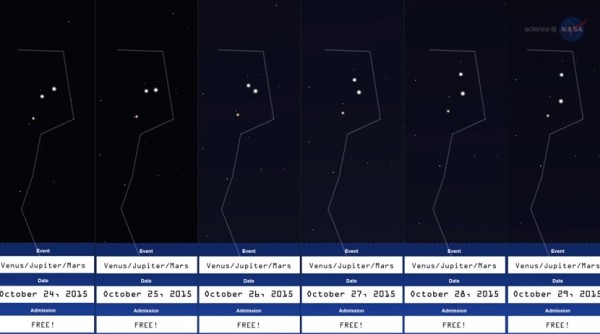A rare, celestial show appeared in the night skies beginning Friday, November 6, as the planets Venus, Jupiter and Mars were seen during a cosmic dance. Stargazers were treated to this show where it did not require advanced telescopes and equipment to view the planets align, which became observable with the naked eye amidst clear skies away from light pollution from the southeastern skies.
Weather permitting, Jupiter can be seen fairly bright in the southeastern skies which was observed located to the left, just above a crescent moon. The moon and Jupiter's distance from each other is estimated to be less than three degrees.
During the weekend, the three planets appeared to form a comic planetary cluster in one area of the skies as the moon lined up alongside with Venus that formed an iconic picture where Mars appeared dimmer with a reddish hue.
Hours before dawn, the moon illuminated the right side of Venus with a distance less than two degrees where Mars was discreetly shining above Venus and the moon. Scientists estimate that the Martian brightness was about 1/250 intensity of Venus.
Throughout the year, the moon and the planets are dancing around each other in the night skies with various conjunctions and arrangements however, it is not so common to witness the three planets along with the moon in alignment with each other in the same region in the sky.
With just the naked eye, the planets in the solar system, namely Mercury, Venus, Mars along with Saturn and Jupiter can be easily observed in clear night skies. At any specific time, each planet possesses a unique placement in the sky since they move at different speeds with their orbit around the sun.
Those planets that can be seen in the night sky without the aid of powerful telescopes are considered to possess an ecliptic orbit around the sun in which the moon also follows an ecliptic orbit around the Earth.


